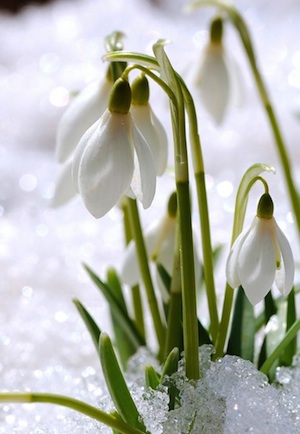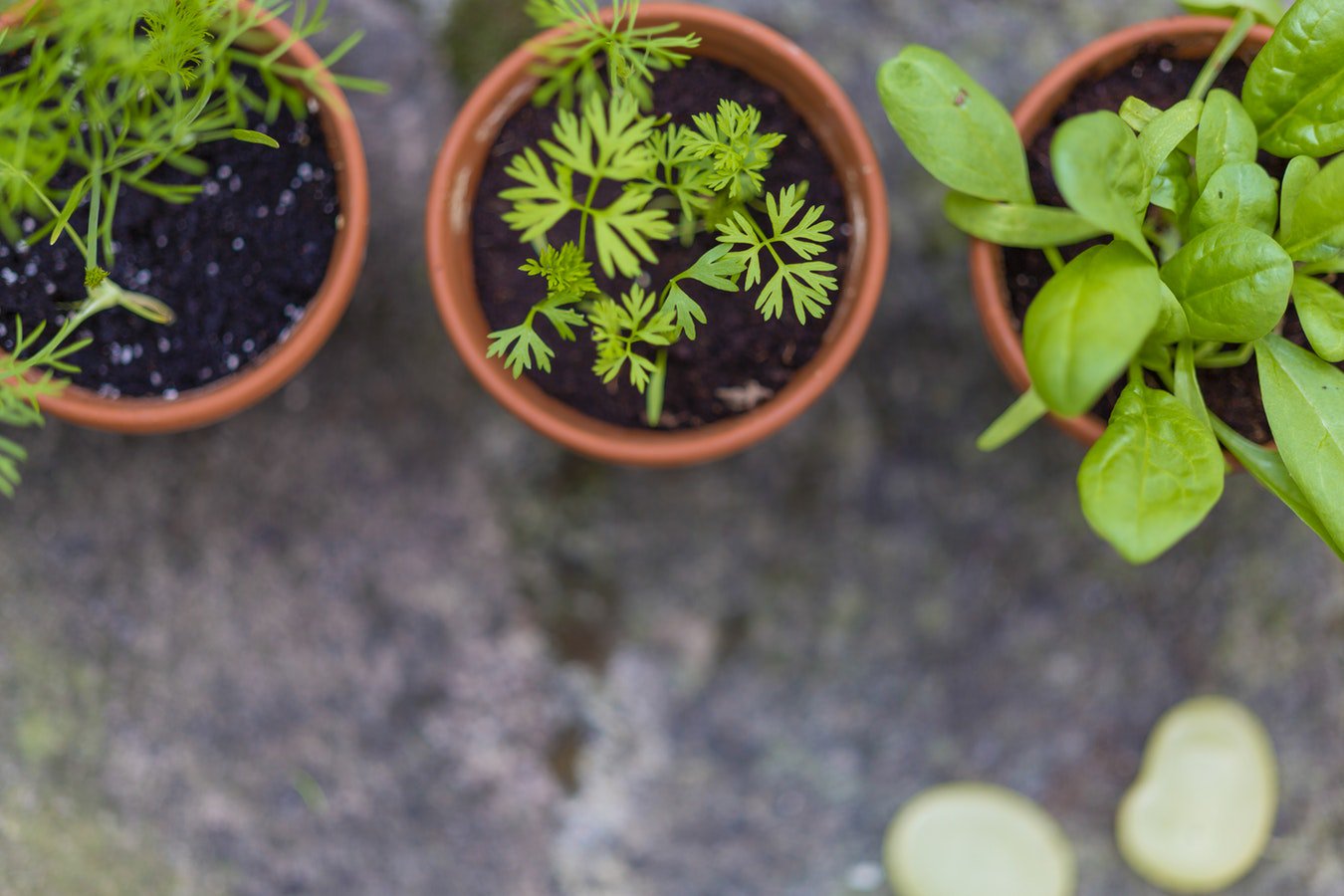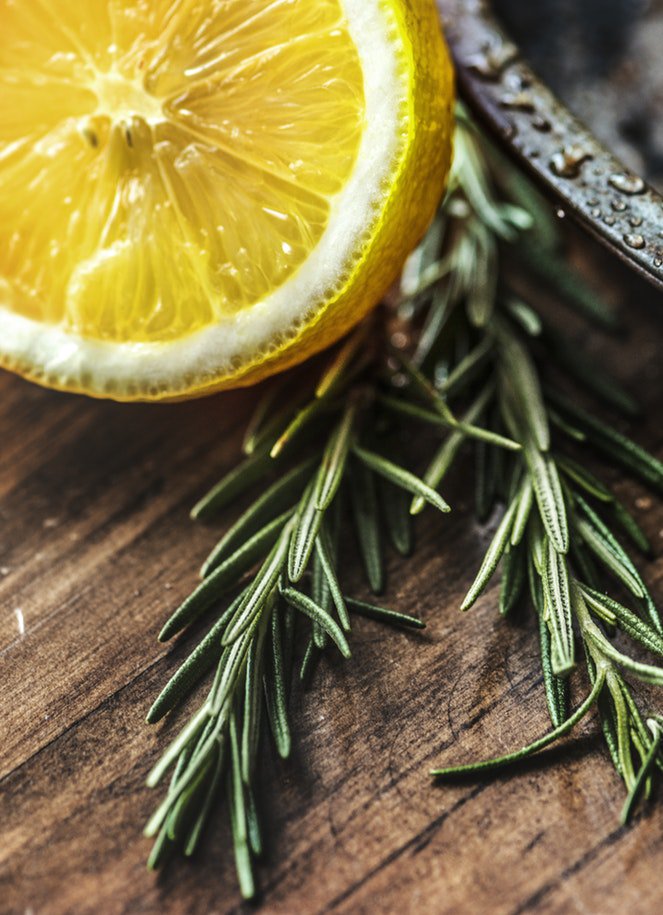Herbs More than Simple Seasonings

Patience. Its essentially for healthy living. Peace in the present and hope for the future often times comes with an attitude of patience. Worry is just the opposite of patience. Too much stress and anxiety wears downs our immunity and body in general. My personal therapy is gardening. Gardening helps me unwind, relax and gives me hope. This article resonated with me reminding me to be patient.
Front Yard to Back Country:
It is a northern gardener’s life to be unable to garden outdoors for half the year (or more). Just one of gardening’s many great lessons: patience. That and learning about cycles. Cycles of seasons, light and shadow, decay and rebirth. Of noticing migrating birds when they leave, and when they return again. When the massive queen bumblebees emerge and drowsily look for new dens to start this year’s hive, eliciting alarm as they buzz close by ears and again reacquaint us to the sound of buzzing creatures. And of the tenacious determination of green growing things, pushing through the soil and sometimes even, through snow.

The older I get the more I have learn that plants offer more than just a psychological boost of joy. They have become my source of health physically. I have gathered my garden into little pots sitting on my untidy kitchen counter by my window. Snow falls outside, my medicinal and kitchen herbs fresh and clean inside, staring at me as I do dishes.
I have learned these herbs are more than just pretty green and a tasty seasonings, they have become my go-to remedies.
1. BASIL – Basil is an herbal carminative, that is, it can relieve gas and soothe stomach upsets. One possible explanation for its calming effect is a compound called eugenol, which has been shown to help ease muscle spasms. Research is still preliminary, but laboratory studies also suggest that compounds found in basil may help disrupt the dangerous chain of events that can lead to the development of cancer.
2. DILL – Dill has been used to soothe the digestive tract and treat heartburn, colic and gas for thousands of years. In fact, the word dill comes from the Old Norse word dilla, meaning to lull or soothe. The herb has an anti foaming action that suggests why it might help break up gas bubbles. Like parsley, dill is rich in chlorophyll, which also makes it useful in treating bad breath.
3. GARLIC – Intact garlic cloves contain an odorless, sulphur-containing amino acid called alliin. When the garlic is crushed, alliin becomes allicin. Research shows that allicin helps lower cholesterol and blood pressure and also helps prevents blood clots. Garlic can also reduce the risk of developing atherosclerosis (hardening of the arteries). Compounds in this familiar bulb kill many organisms, including bacteria and viruses that cause earaches, flu and colds. Research indicates that garlic is also effective against digestive ailments and diarrhea. What’s more, further studies suggest that this common and familiar herb may help prevent the onset of cancers.
4. MINT – Herbalists the world over use mint, as a premier stomach tonic, to counteract nausea and vomiting, promote digestion, calm stomach muscle spasms, relieve flatulence, and ease hiccups. Menthol, the aromatic oil in peppermint, also relaxes the airways and fights bacteria and viruses. Menthol interferes with the sensation from pain receptors, thus it may be useful in reducing headache pain. Scientific evidence suggests that peppermint can kill many kinds of micro-organisms, and may boost mental alertness.In one study, people who inhaled menthol said they felt as if it relieved their nasal congestion, although it didn’t increase their measurable air flow.
For me, mint is calming. Teas made from mint and citrus rinds relax and help me unwind.

5. OREGANO – Oregano contains at least four compounds that soothe coughs and 19 chemicals with antibacterial action that may help reduce body odor. The ingredients in oregano that soothe coughs may also help un-knot muscles in the digestive tract, making oregano a digestive aid. This familiar spice also contains compounds that can lower blood pressure too.
6. ROSEMARY – Rosemary is one of the richer herbal sources of antioxidants, which have been shown to prevent cataracts, and contains 19 chemicals with antibacterial action that help fight infection. Traditionally used to ease asthma, this common culinary ingredient has volatile oils that can reduce the airway constriction induced by histamine, that chemical culprit of asthma and other allergy symptoms. Herbalists think that rosemary may also help ease breast pain by acting as a natural drying agent to fluid filled cysts.
7. SAGE – The oils found in sage are both antiseptic and antibiotic, so it can help fight infections. Sage is effective for symptoms of menopause, night sweats and hot flashes, because of its estrogenic action and because its tannins can dry up perspiration. There’s also compelling evidence that sage may be of value to people with diabetes for whom the hormone insulin does not work as efficiently as it should. Lab studies indicate that sage may boost insulin’s action.
8. THYME – Thyme contains thymol, which increases blood-flow to the skin. The warmth is comforting, and some herbalists believe that the increased blood-flow speeds healing. An anti-spasmodic. Thyme relaxes respiratory muscles and is endorsed for treating bronchitis by Commission E, the expert panel that judges the safety and effectiveness of herbal medicines for the German government. Aromatherapists say that thyme’s scent is a mood lifter
What do you look forward to most in the midst of the snow and cold weather?
What keeps your hopeful and healthy?
Herb information came from http://www.healthy-holistic-living.com/healing-herbs.html






